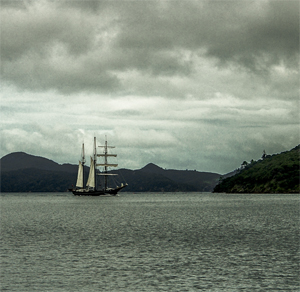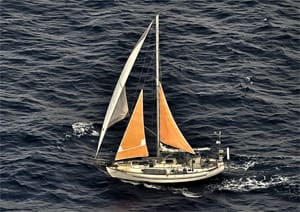To the editor: Great Barrier Island, New Zealand, is only 50 to 60 nautical miles offshore of Auckland — a dense and populated place by most standards — yet the island truly feels a world apart from that big city. In little Port FitzRoy in Great Barrier Island’s northwest quadrant, aboard Anna, our Tayana 37, we were the only yacht in sight.
Great Barrier Island has no grid power. The few people that live here utilize solar energy and wind turbines backed up by portable generators to handle their electrical demands. They also catch rainwater. Marine mussel farms are scattered around the harbor. There is a ferry that runs once a week from the mainland carrying cargo and people. The roads for the most part are rough, unpaved, winding and steep graded with the exception of the narrow sealed tar road that connects the south end of the island with the north. There is a cell tower here that manages, somehow, to supply remarkable (albeit low-bandwidth) mobile, roaming, voice and data connectivity, which is how we download weather data at our anchorage. The outer anchorages near Port FitzRoy are satisfyingly isolated, if not exactly remote.
 |
|
Port FitzRoy on New Zealand’s Great Barrier Island. |
|
Rich Ian-Frese |
Remote, as we have come to understand it, is a relative term that we reserve now for places that we can identify only by a coordinate set, hundreds or perhaps thousands of miles out to sea — days or weeks, a month or possibly more, from any inkling of civilization. A place where, for us, Anna slips stealthily through moving mountains of waves and ocean current, rising to the peaks to catch the steady breeze and fleeting gusts, and settling in the deeper troughs for a few seconds of calmness before repeating the cycle, as day folds into the blackness of night, and night into increasingly more luminescence as early morning materializes.
—Rich Ian-Frese, a retired research engineer, lives aboard Anna with his wife, Cat.

